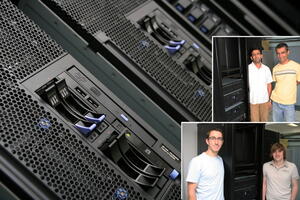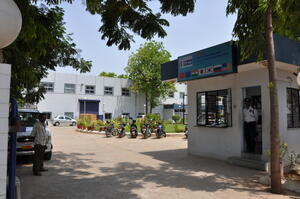IT successfully launches first satellite
Downloading takes time—especially when you're dealing with CAD Models, the complex 3D drawings that depict each and every part of the ITER machine.
Depending on the size, the number of queries involved and the geographical distance between database and client, a model that takes one minute to download locally can easily take 30 times longer if it's downloaded from, say, India or Korea.
In an international organization like ITER, which constantly exchanges loads of technical data with Domestic Agencies, these delays soon become a headache.
A possible solution consists in linking CAD workstations in the Domestic Agencies to the servers and databases at Headquarters.
"We tested this concept with US ITER and the installation took more than a month," explains Network Administrator Björn Wilhelm.
The experience convinced IT that the most rational way of duplicating the servers was to do it locally, on hardware located in the Domestic Agencies, and to manage them remotely from here—the "IT Satellite" option.
India was first on the IT list of Domestic Agencies to equip—for Björn and his colleague Jean-Daniel Delaplagne, it was time to start packing.
"We were a bit stressed," acknowledges Björn. "It was our first big trip abroad. Wouldn't we forget something? Would the hardware be there when we arrive?" The pair travelled light: a tourist guide and a 500-gigabyte hard disk containing the data to install. "We arrived in Ahmedabad on 14 June and it was 45 °C. The building is a former ice-cream parlor with lush gardens all around—a very different scene from the rest of the city, which is very dry and dusty."
Björn and "JD" were to spend 11 days in Ahmedabad, first waiting for the hardware to arrive—it had been delayed by more than two weeks—then implementing the "IT Satellite" at the Domestic Agency. They didn't have much time to play tourist, just a two-hour tour of a temple on a Saturday, a visit to the Institute for Plasma Research in Gandhinagar, 10 minutes away, and a birthday party to which they had been invited.
With the infrastructure set up in Ahmedabad, remote monitoring installed and replication procedures being implemented, the Domestic Agency's personnel can access data as fast and as easily as if they were physically located at ITER Headquarters.
This capacity will progressively be extended to all Domestic Agencies and for Björn and his colleagues, this means more travelling: the US in July, then Russia, Korea, Japan and China.




